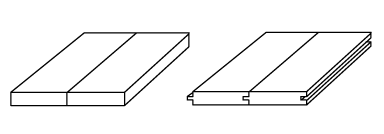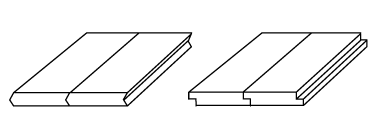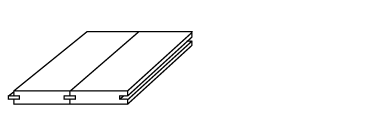|
||
 |
||
1 Imohagi 芋矧, a straight joint. The lengthwise edges of boards planed very smoothly and butted together. It is used for flooring and paneling.
2 Honzanehagi 本実矧, a tongue and groove joint with the groove cut along edge of a one board and a tongue cut from the edge of another board. The tongue fits snugly into the groove of the next board. Useful for hardwood flooring. Also called sanehagi 実矧 and inroujakuri 印籠決.
3 Hibukurahagi 樋部倉矧, a V-groove joint. A board with a V-angle edge protruding on one side and a V-groove cut on the opposite side. The two boards fit tightly together. This joint is not strong enough for flooring but works well for paneling.
4 Chigaihagi 違矧 or aijakurihagi 合決矧, a shiplap, rabbeted or rebated joint. The length of one side of a board is stepped while the opposite side is rabbeted to fit over the stepped side of the other board. It is good for exterior siding and paneling.
5 Yatoizanehagi 雇実矧, a spline or feathered joint. The spline is usually made of hardwood inserted into grooves cut on each edge of boards made of softwood. Sometimes the splines are cut across the grain to increase their strength. This is not really a true joint. Used for flooring. These joints are frequently used in temple, shrine and domestic architecture.
 |
||
|
||
 |
||
|
||
 |
||
|
(C)2001 Japanese Architecture and Art Net Users System. No reproduction or republication without written permission.
掲載のテキスト・写真・イラストなど、全てのコンテンツの無断複製・転載を禁じます。

